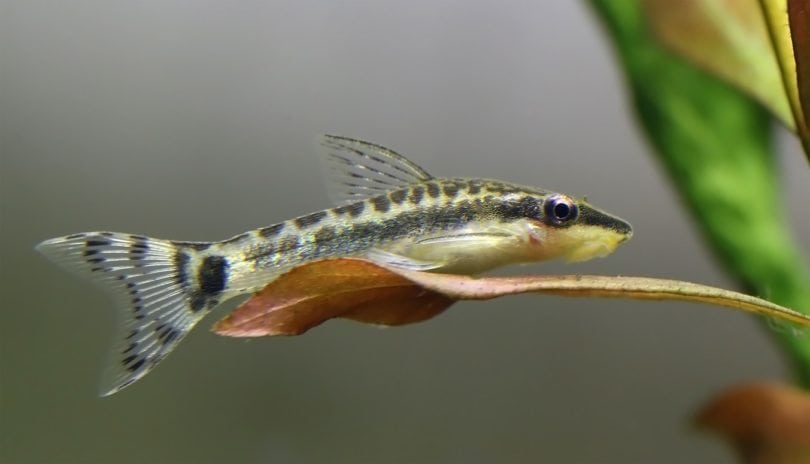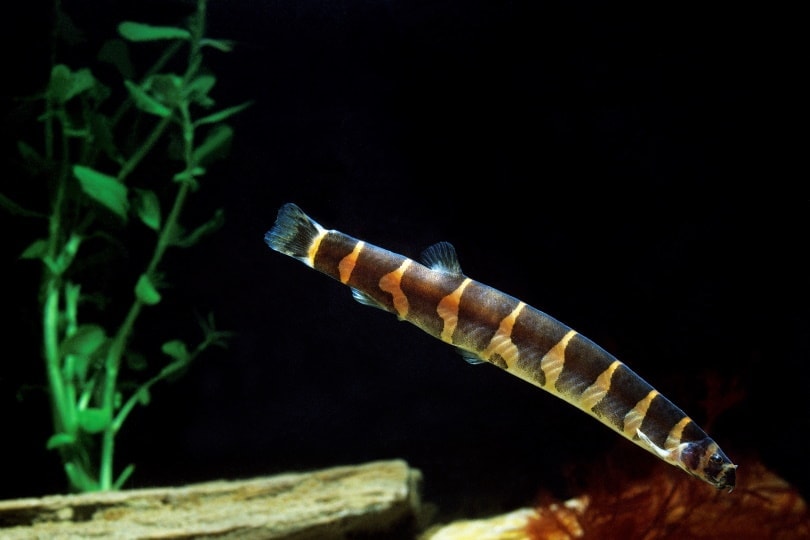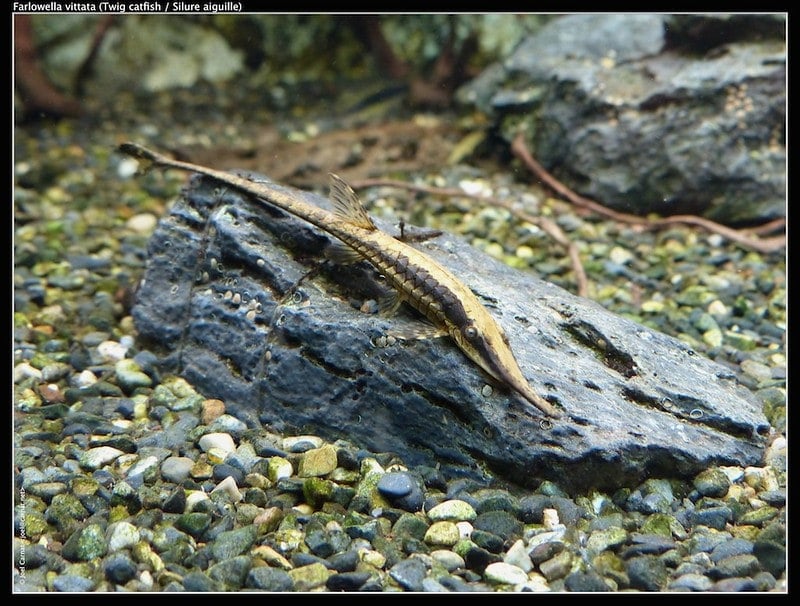10 Great Bottom Feeder Fish For Your Aquarium (with Pictures)

Updated on

When it comes to aquarium keeping, balance is key. Finding fish that don’t just peacefully coexist, but that also help fill each level of the tank can be a challenge. When it comes to the tank floor and lower water column, there are lots of great options for fish that will not just help keep the lower portion of the tank clean, but will also bring their own unique charm to your tank. Regardless of the size of your aquarium, there’s a bottom feeder fish to suit your tank.
Why Should You Get Bottom Feeders?
Bottom feeders are great for multiple reasons that vary depending on the fish itself. The biggest benefit of bottom feeders is that they often pick up food that was missed by fish further up in the water column. This helps keep your tank cleaner longer, especially if you are prone to overfeeding.
Many bottom feeders will also eat algae or dead plant matter, which helps keep your tank clean in a completely different way. If you have live plants in your tank or you offer veggies and fruits to your fish, then you will inevitably end up with dead plant matter in the bottom of your tank. Without bottom feeders, this plant matter will rot in the tank until you vacuum it out. Bottom feeders help clean up this mess, decreasing the need for tank vacuuming.
The 10 Great Bottom Feeder Fish
1. Otocinclus Catfish

Oto Cats are petite fish that tend to stay under 2 inches. They prefer to be kept in small groups, so plan to get at least four to six of them for your tank. They are peaceful and when they are kept in groups, they become more active and less timid. They are efficient algae eaters and will also pick up leftover food from the bottom of the tank. The best part about Oto Cats is that they will leave the bottom of the tank and eat algae from the sides of the tank and from plants and décor.
2. Plecostomus

This family of fish are also referred to as armored catfish. There are a few dozen Plecostomus varieties in the fish-keeping market, so you have plenty to choose from. The most popular is the Common Pleco, but most people don’t realize that these fish can exceed 12 inches when fully grown, making them a poor pick for most home aquariums. However, there are great, smaller options that are more efficient at cleaning up the tank than Common Plecos, like the Clown Pleco and the Bristlenose Pleco. Plecos are generally peaceful but can begin to exhibit territorial or aggressive tendencies as they age.
3. Corydoras Catfish

These rotund little fish come in multiple varieties, most of which stay below 4–5 inches in length. They are peaceful fish that enjoy the company of other Cory Cats, so it’s best to keep them in small groups. They are bottom feeders but, like Oto Cats, will venture into other areas in the tank to find food.
4. Loaches

Not all Loaches are bottom feeders, but many of them are scavengers. Kuhlis, Pandas, Botias, and Dwarf Chain Loaches are often considered to be great bottom feeders. Other types of Loaches, like Dojo Loaches, are opportunistic scavengers. This means that, although they are not true bottom feeders, they will happily scour the tank for any food that interests them. They’ll eat food from the tank floor, and they will dig under décor for small pieces of food that may have fallen there. Loaches come in a variety of sizes from a few inches to over a foot in length, and there are cool and warm water Loaches.
5. Geophagus

This group of Cichlids has one of the more unique ways of eating. These fish are known for scooping up large bites of substrate and spitting the substrate back out after getting the food from it. Sand and other fine, soft substrates are best for these fish. Most of them can reach 6–8 inches in length, and some varieties grow even larger than that. Like most Cichlids, Geophagus are generally considered to be semi-aggressive, so tank mates should be chosen with care.
6. Twig Catfish

You may also see these fish referred to as Farlowella Catfish or Whiptail Catfish. These unusual-looking fish have developed very effective camouflage in the form of looking almost exactly like a thin twig or stick. In the wild, this provides them protection against predation. They are long, reaching 7–9 inches in length, but they are very thin. Like Plecos, the Twig Catfish is considered to be an armored catfish, which provides it even more protection in the wild. These fish are moderately difficult to care for and are not recommended for beginners.
7. Synodontis Catfish

This family of catfish is widely known for their unusual swimming habits, like those of the Upside-down Catfish, whose name is self-explanatory. Most varieties of Synodontis Cats can reach between 4–12 inches, but some varieties may exceed this size. They are scavengers by nature and typically have a peaceful, gentle temperament. Many varieties have the long, noticeable barbels that many catfish are known for.
8. Siamese Algae Eaters

The Siamese Algae Eater is an efficient algae-eating fish that can reach up to 6 inches in length. They are long and thin, and they feature a long, black line that runs the length of the body and into the tail. These social fish are peaceful and can happily live alone or in groups of their own kind. The SAE is often confused with the Flying Fox, even in shops selling the fish. Look for the rough end of the black line on the body to identify an SAE. Flying Foxes tend to have a more abrupt, defined end to the black line on the body. SAEs are more efficient tank cleaners than Flying Foxes are often considered to be.
9. Pictus Catfish

These fish look distinctly catfish-like, with their long, trailing barbels. They typically grow to around 5 inches in length and can live longer than 8 years with excellent care, making them a good investment. Pictus Catfish are peaceful and laid-back fish that tend to be very active, so you’ll often see them out and about searching for food in the tank. They often have eye-catching colors and patterns and are beloved in the fish-keeping world for their playful antics.
10. Dwarf Shrimp

Although not a fish at all, Neocaridina and Caridina shrimps are some of the best tank cleaners around. These tiny animals will spend all day scouring the tank for any little bit of food. They will eat biofilm from driftwood, leftover food, decaying plant matter, and even deceased tank mates. Since most dwarf shrimp don’t exceed 1-inch in size and they have specific tank parameter needs, especially Caridinas, they are not a great pick for many tanks since they can easily become prey for larger animals. Dwarf shrimp can be great bottom feeders and tank cleaners for tanks with small, peaceful fish, like Ember Tetras and Chili Rasboras.
Final Thoughts
There are literally hundreds of fish you can choose from to be bottom feeders in your tank! Whether your tank is 5 gallons or 50 gallons, there’s a perfect bottom feeder to help you keep the tank clean and free of waste. Bottom feeders help decrease the risk of ammonia and nitrite spikes from decaying food, as well as decreasing the need for substrate vacuuming. They are not a replacement for routine water changes and parameter checks, though! Don’t put all the work on your bottom feeders. They’re an essential part of the ecosystem of your tank, but they can’t do it all alone.
Featured Image Credit: Grigorev Mikhail, Shutterstock











